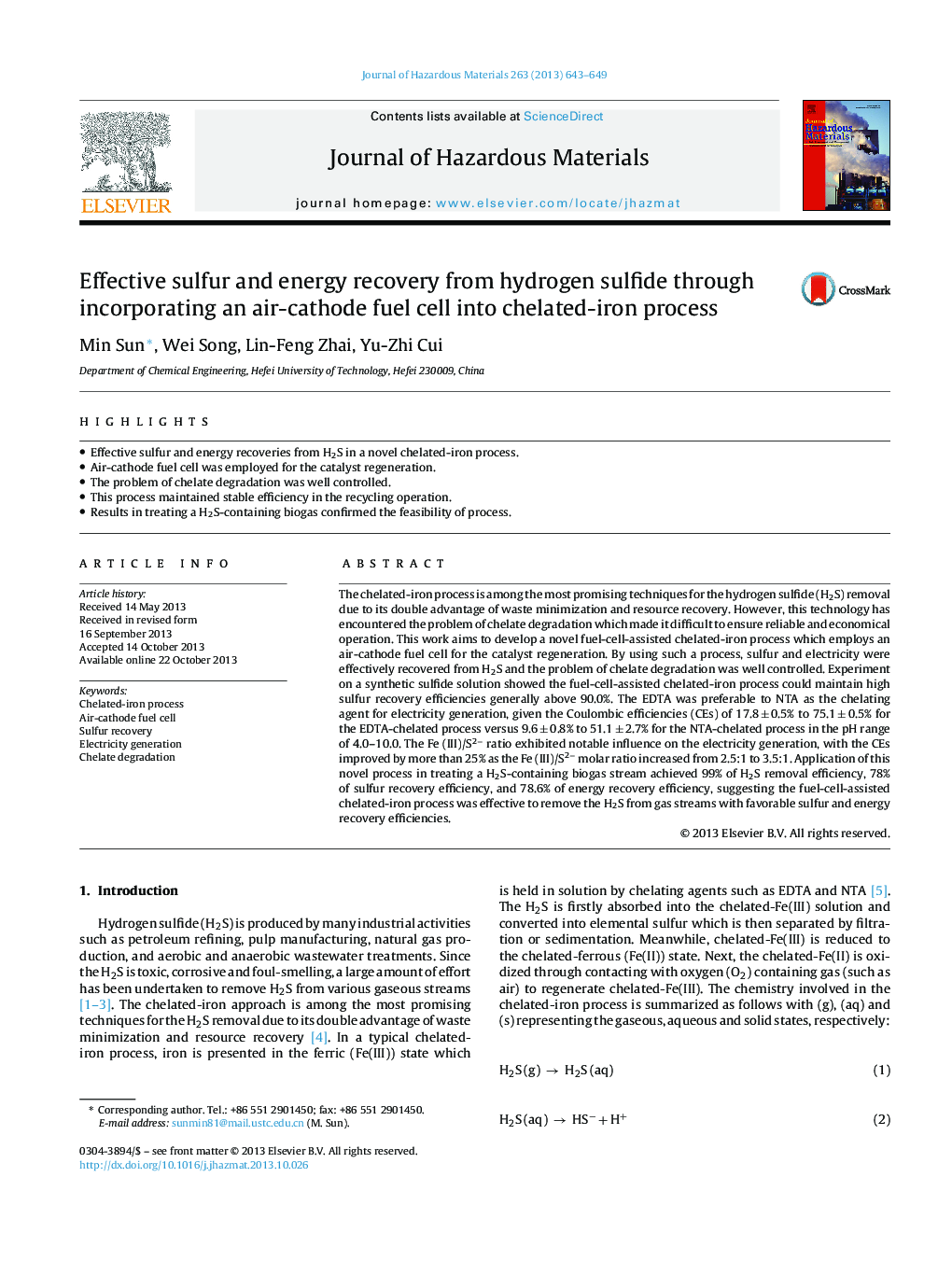| Article ID | Journal | Published Year | Pages | File Type |
|---|---|---|---|---|
| 10372674 | Journal of Hazardous Materials | 2013 | 7 Pages |
Abstract
The chelated-iron process is among the most promising techniques for the hydrogen sulfide (H2S) removal due to its double advantage of waste minimization and resource recovery. However, this technology has encountered the problem of chelate degradation which made it difficult to ensure reliable and economical operation. This work aims to develop a novel fuel-cell-assisted chelated-iron process which employs an air-cathode fuel cell for the catalyst regeneration. By using such a process, sulfur and electricity were effectively recovered from H2S and the problem of chelate degradation was well controlled. Experiment on a synthetic sulfide solution showed the fuel-cell-assisted chelated-iron process could maintain high sulfur recovery efficiencies generally above 90.0%. The EDTA was preferable to NTA as the chelating agent for electricity generation, given the Coulombic efficiencies (CEs) of 17.8 ± 0.5% to 75.1 ± 0.5% for the EDTA-chelated process versus 9.6 ± 0.8% to 51.1 ± 2.7% for the NTA-chelated process in the pH range of 4.0-10.0. The Fe (III)/S2â ratio exhibited notable influence on the electricity generation, with the CEs improved by more than 25% as the Fe (III)/S2â molar ratio increased from 2.5:1 to 3.5:1. Application of this novel process in treating a H2S-containing biogas stream achieved 99% of H2S removal efficiency, 78% of sulfur recovery efficiency, and 78.6% of energy recovery efficiency, suggesting the fuel-cell-assisted chelated-iron process was effective to remove the H2S from gas streams with favorable sulfur and energy recovery efficiencies.
Related Topics
Physical Sciences and Engineering
Chemical Engineering
Chemical Health and Safety
Authors
Min Sun, Wei Song, Lin-Feng Zhai, Yu-Zhi Cui,
